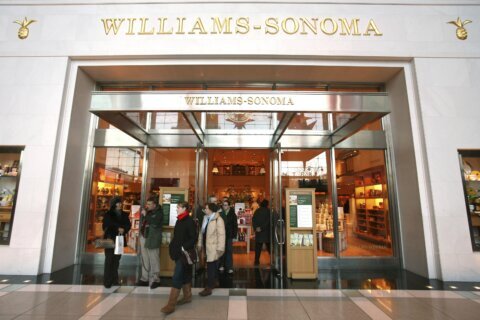WASHINGTON — There was a time in American tea culture regarded tea as “just tea,” a catch-all phrase used for the brown-colored beverage that could warm the soul in a single sip.
“Growing up, my family drank one kind of beer, one kind of wine,” said Christian Eck, tea specialist at Park Hyatt Washington. “But they drank ‘coffee’ or they drank ‘tea.’ They didn’t drink a certain type of coffee. They didn’t drink a certain kind of tea. They drank ‘it.’”
Now, you’ve got well-appointed tea salons willing to sell you boutique brew by the bag full — or loose leaf, if you prefer. Today, high-end restaurants are curating tea lists in the same manner as wine. Some even have certified tea sommeliers to guide you through pairings.
To what do we owe this recent elevation of tea? A broader willingness to try something new.
“People are going out and they’re bypassing coffee in the morning and now they’re drinking tea,” Eck says. “They’re searching for those a little more obscure varieties of tea or trying to source something that’s organic or unique.”
The Tea Cellar at Park Hyatt has nearly 40 rare teas and has a glass humidor to store and age vintage varieties. Eck says he’s noticed that more guests are requesting oolong, a tea with characteristics of green and black teas.
Matcha is another tea that’s gained notoriety as of late. It’s a Japanese green tea that’s pulverized into a powder. Eck describes its flavor as slightly sweet with some herbal notes, but not grassy or harsh.
“You can blend it into lattes — I know a lot of people do that,” Eck says. “You can put it into sauces, stocks. Ice cream is a popular one, cream-puff filling, desserts. It’s a very versatile tea because of that powder, essentially that pure concentrate.”
Figure out what you like
A good starting point for finding the right tea is figuring out what you like. “You don’t necessarily need to make a huge jump into a new category when you can explore a lot of that stuff within the realm of what you already like,” he says.
Steeping has a few rules for an ideal brew — like not using boiling water for white, green and oolong teas, though you can steep these for as long as you like. Near-boiling is OK for black teas, but steeping them longer than five minutes could result in unfixable bitterness.
In general, American tastes are branching out. A National Restaurant Association survey from last year found that 64 percent of consumers considered themselves to be “more adventurous in their food choices” than they were two years ago.
But there are places in the world where people consume more tea than they do water– we’re nowhere near getting to that point, Eck says. The Tea Association of the USA estimates that Americans consumed more than 80 billion gallons of tea in 2014. But 85 percent of that was in the form of iced tea.
Also, Eck notes that coffee experienced a similar resurgence 10 years ago and has yet to earn its top billing.
“I think as people start to try more, they’ll have those varieties in their homes, but I don’t think it will reach that point where it’s more important than water,” Eck says.







